There has been a lot of excitement around 3D printing, in technology circles and everyday conversations alike. In this interview, Avi Reichental, president and CEO of 3D Systems (NYSE:DDD), shares his vision on the 3D printing revolution and its breakthrough impact across industries.
Part I, below, focuses on the history of 3D printing, what 3D printers can do, and tools to overcome barriers to mass adoption.
Part II will focus on the 3D Systems business model, the value of 3D printing and mass customization, and the impact of technological convergence on the 3D printing revolution.
Take us to the early days of 3D Systems. What led 3D Systems to pioneer 3D printing?
3D printing was invented exactly 30 years ago, it was invented on March 9, 1983 by Chuck Hall who was our founder and inventor. Chuck observed that epoxies were drying on the floor one layer at a time and he concluded that he could develop a new system that could produce geometries one layer at a time. The reason this was important to him was that he was watching at the time the demise of the American automotive industry, because it took so long to develop new product prototypes and bring them to market, and he concluded that if he could develop a rapid prototyping tool in the form of a 3D printer, it would allow people to instantly go from design to a product in their hands and to turn around the automotive industry. So that was his inspiration. What is amazing is that he successfully created the first part on March 9, 1983, but it took him almost 3 years to get there, from the time that he had the idea until he successfully created the first part, because in those days he didn't even have good enough CAD that could organize and slice layers and he did not know how to roll the layers and place them one at a time. But he was so passionate to do something new, do something that will allow designers to design, and hold something in their hands, because he felt that the automotive industry should be successful. This is what inspired him and we are lucky.
Can you define 3D printing for the non-expert?
It is actually quite simple to understand. Think of it in terms of replicating any shape that you could hold in your hands. If you took for example an ordinary apple and you wanted to replicate it, the way that you would do it with 3D printing is that you would take a digital image of the apple, you would slice it one layer at a time, so in this case imagine that you slice the apple with a knife, and then you would reconstruct it by putting one layer of the apple on top of the other and press them, and on the other side you will have a perfectly identical apple. So, it is the process of taking a digital model, slicing it in software and then replicating it in reality so that it comes out of the printer exactly as you intended it.
Let's talk about the Cube 3D printer: How does it print? What can I print? Size? Materials?
The Cube 3D printer prints with LEGO like plastics and with PLA plastics, one is more of a permanent plastic, the PLA is bio-degradable so it can be composted, and what you can print with it is any geometry in the size of up to five and a half inches cube, and you can print collectibles, toys, pieces of art, educational pieces, accessories, replacement parts for a variety of household furniture and appliances, just about anything you can imagine.
How does it compare to the CubeX printer that has recently received the award for the Best of CES 2013 in the Emerging Tech Category. What are the innovative features?
The CubeX is much larger, it can print in a single piece, parts as large as regulation size basketball and it can print up to three materials or three colors simultaneously. So it is more of the professional grade of home, classroom, and hobby 3D printers but it is just as much plug and play, very reliable, fast, and very accurate, and most importantly the only one that can print simultaneously with either three colors or three materials.
Cubify.com: What is it? What are the goals?
In Cubify.com we are really trying to democratize access to this exciting technology and unleash the creativity of kids and adults alike, so we created a mash-up between what looks like an iTunes and an App Store so that people could come and download content that is readily curated and printed or upload content if they are artists or designers and they want to sell it to somebody else, but also if you don't know how to create, you can begin to download apps that are as simple as playing video games or as simple as working in a 3D coloring book so that anybody can instantly begin to customize, share, communicate or if they wanted to monetize their creations by selling them to somebody else. So it is an amazing place, it is our version of an iTunes and App Store for all things 3D, and it is also a good place to download a very affordable and very powerful CAD for consumers which we call Cubify Invent, a place to come and upload your photos and begin to customize and accessorize, it is just an amazing place that is improving and growing every day and in every way.
Ease of use has been considered a major barrier for consumer adoption of 3D printers. 3D Systems has introduced Apps, Cubify Invent, and Cubify Capture. How are these innovations helping to overcome the barriers to adoption?
Let me back up and say that we understand that adoption comes from democratizing access and democratizing access means a few things to us. First, it means we want to be really affordable and we are absolutely committed to continue to make 3D printers for home, classroom, and for the hobby shop, more and more affordable, even below the $1,300 Cube that we sell today. And for the record, let me say that it will soon enough be below $1,000, and in the next couple of years below $500. So we are very committed to that.
The second element of democratization is about reliability and fidelity and printability and the whole plug and play aspect so that people concentrate on what can the printer do for me and how much fun can I have with it as opposed to how will I make it work and will it finish to print. So the Cube, in the last twelve months, won almost every award in the plug and play simplicity and reliability, because it really delivers on the printability and plug and play and it is the only one that is certified for home use.
The third part of democratization of access is simplicity. And here I am talking about the content creation and the apps, like Cubify Capture and Cubify Invent, and other apps that we already have on Cubify.com. Because it is really important to us to remove and to be passionate about removing the expertise or friction that stands between this amazing technology and the ability of millions of people to use it, and that means that we will continue to gamify and simplify and make it fun and intuitive to create 3D content from your smartphone camera, from your Kinect Xbox, from the Leap motion sensor when it comes on the market in May, make it fun, easy, and intuitive, from your iPad and tablet, because we believe that anybody can create and everybody is creative. Once we remove the complexity, people will begin to create.
Part II coming up soon. "Become a Fan" to receive an email when Part II is published.
